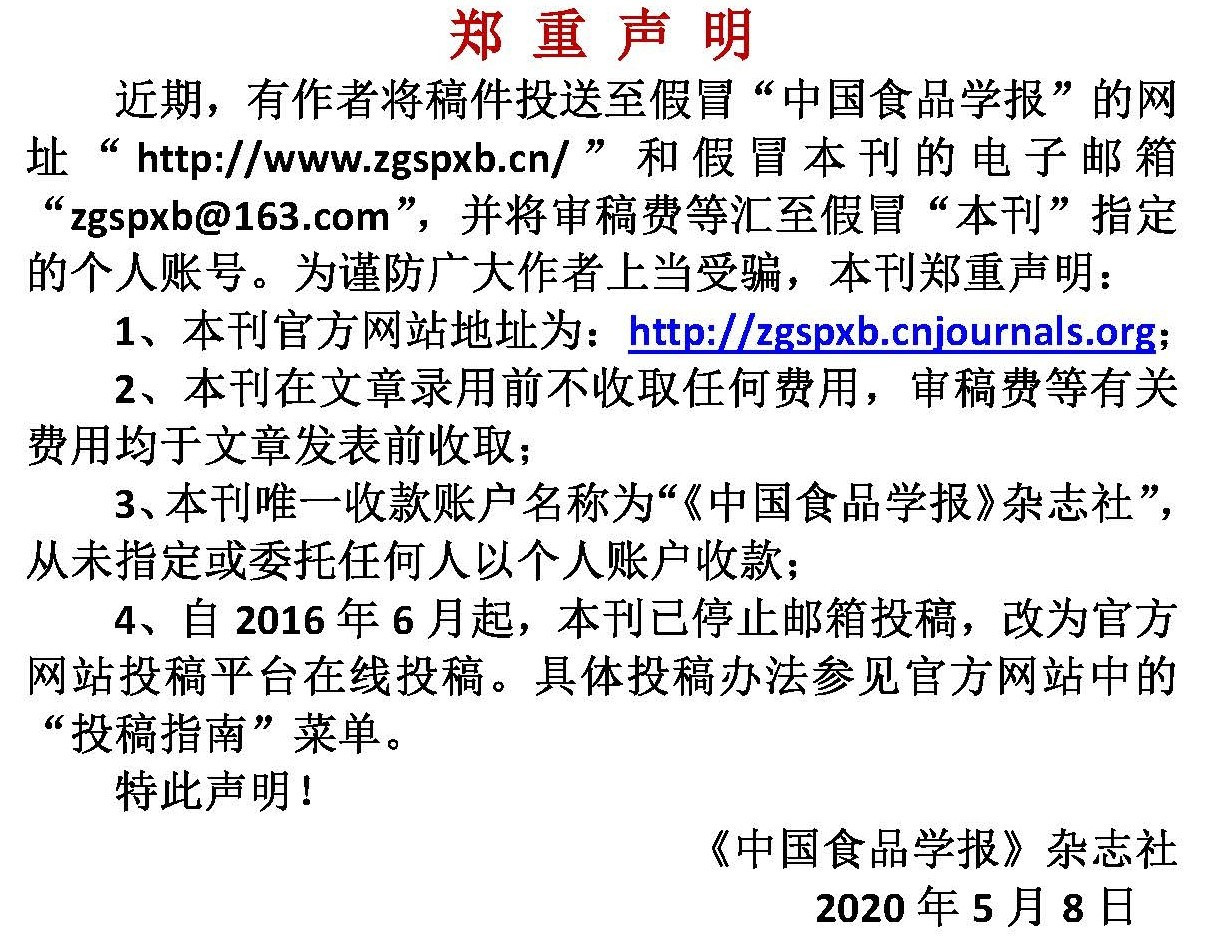破壁方法对红球菌11-3胞内几丁质脱乙酰酶释放的影响
作者:
作者单位:
(1.河北农业大学食品科技学院 河北保定 071000;2.河北科技师范学院食品科技学院 河北昌黎 066600;3.北京工商大学食品与健康学院 北京 100048)
作者简介:
通讯作者:
中图分类号:
基金项目:
河北省重点研发计划项目(19273201D);河北省现代农业产业技术体系淡水养殖创新团队建设项目(HBCT2018180206)
from Rhodococcus sp. 11-3
Author:
Affiliation:
(1.College of Food Science and Technology, Hebei Agricultural University, Baoding 071000, Hebei;2.College of Food Science and Technology, Hebei Normal University of Science & Technology, Changli 066600, Hebei ;3.School of Food and Health, Beijing Technology and Business University, Beijing 100048)
Fund Project:
引用本文
肖宇,石文琪,于宏伟,马爱进,桑亚新,孙纪录.破壁方法对红球菌11-3胞内几丁质脱乙酰酶释放的影响[J].中国食品学报,2023,23(7):68-79
复制分享
文章指标
- 点击次数:
- 下载次数:
- HTML阅读次数:
历史
- 收稿日期:2022-07-18
- 最后修改日期:
- 录用日期:
- 在线发布日期: 2023-08-17
- 出版日期:
文章二维码

版权所有 :《中国食品学报》杂志社 京ICP备09084417号-4
地址 :北京市海淀区阜成路北三街8号9层 邮政编码 :100048
电话 :010-65223596 65265375 电子邮箱 :chinaspxb@vip.163.com
技术支持:北京勤云科技发展有限公司
地址 :北京市海淀区阜成路北三街8号9层 邮政编码 :100048
电话 :010-65223596 65265375 电子邮箱 :chinaspxb@vip.163.com
技术支持:北京勤云科技发展有限公司
